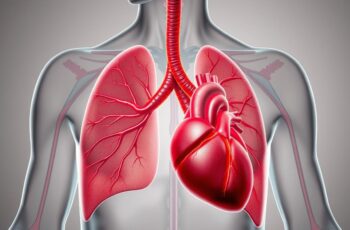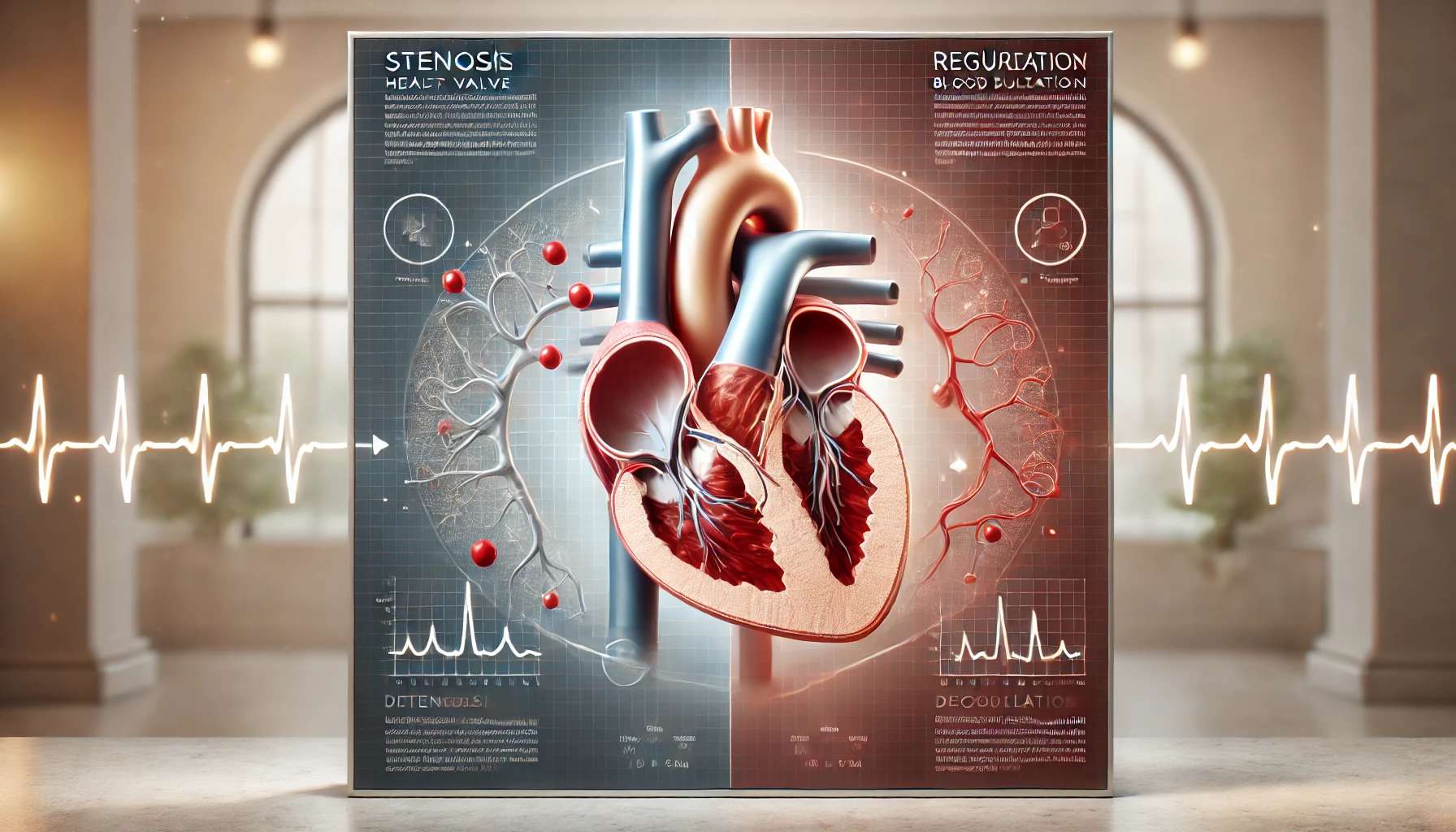Ad Blocker Detected
Our website is made possible by displaying online advertisements to our visitors. Please consider supporting us by disabling your ad blocker.
Congestive heart failure is a long-term condition where the heart can’t pump blood well. This leads to fluid buildup in the body. It can really affect someone’s life, but with the right care and lifestyle changes, it can be managed. About 6.2 million adults in the U.S. have congestive heart failure, and worldwide, 26 million people do.
Knowing the symptoms of congestive heart failure is key for early treatment. Symptoms include shortness of breath, feeling very tired, and swelling in the legs and feet. The five-year survival rate for those with congestive heart failure is about 50%. This is lower than other chronic conditions. Heart failure is a big reason for death after a heart attack, often within one to two years.
Congestive heart failure is a serious cardiovascular disease that needs quick medical help. It’s more common in people over 65, with 10% of this age group affected. It’s important to spot the signs early to get medical help and avoid more problems.
Key Takeaways
- Congestive heart failure is a chronic condition where the heart becomes unable to pump blood effectively.
- Approximately 6.2 million adults in the United States are affected by congestive heart failure.
- Common symptoms of congestive heart failure include shortness of breath, fatigue, and swelling in the legs and feet.
- The five-year survival rate for congestive heart failure patients is about 50%.
- Heart failure is a major cause of cardiac death after myocardial infarction, often occurring within one to two years post-heart attack.
- Early diagnosis and treatment are critical for managing congestive heart failure and improving heart health.
Understanding Congestive Heart Failure
Congestive heart failure happens when the heart can’t pump blood well. This leads to fluid buildup in the lungs and body. It can be caused by aging and other factors. The heart function is key to our health, and problems here can be serious.
The heart failure definition includes left and right-sided heart failure. Left ventricular heart failure can lower the ejection fraction, a key measure of heart function. Knowing the types of heart failure helps spot symptoms and find the right treatment.
Millions worldwide suffer from congestive heart failure, and the risk grows with age. Arrhythmias, like atrial fibrillation, play a big role in heart failure. Treatment for heart failure includes various medications to boost heart function.
Common Symptoms of Congestive Heart Failure
Congestive heart failure signs can be hard to spot. It’s key to know the common symptoms like shortness of breath, feeling very tired, and swelling in the legs and feet. These signs can creep up slowly. It’s important to watch your health closely and see a doctor if you notice anything odd.
Some people might feel orthopnea, or shortness of breath when they lie down, which is a big sign of heart failure. Others might get paroxysmal nocturnal dyspnea, which is sudden shortness of breath while sleeping. The usual signs of congestive heart failure include:
- Shortness of breath, even when lying down
- Fatigue
- Swelling in the legs and feet
- Rapid weight gain
Spotting these symptoms early is critical for getting the right treatment. It’s also worth noting that heart failure gets more common with age. Older folks are more at risk because of natural changes in their bodies. By knowing the common signs of congestive heart failure, people can start managing their condition and get better.
Stages and Classification
Understanding the stages and types of congestive heart failure is essential. It helps determine the condition’s severity and the right treatment. The American Heart Association uses a system to measure heart failure’s severity, from mild to severe. The NYHA classification system also categorizes heart failure into four levels, based on symptom severity.
The NYHA system has four classes: Class I (no symptoms), Class II (mild symptoms), Class III (moderate symptoms), and Class IV (severe symptoms). The American Heart Association finds the NYHA system very useful for figuring out heart failure’s severity and planning treatment. The American Heart Association also has heart failure stages, from stage A (high risk) to stage D (advanced).
Knowing the heart failure stages and types is important for a good treatment plan. Working with healthcare providers and following the American Heart Association guidelines can help manage congestive heart failure. This way, people can live a better life.
Risk Factors and Causes
Congestive heart failure has many heart failure risk factors and causes of heart failure. High blood pressure, diabetes, and coronary artery disease are major risks. They can harm the heart and make it unable to work right. Other factors like smoking, obesity, and a sedentary lifestyle also raise the risk.
Nearly 50% of American adults face at least one major risk for heart disease. These include high blood pressure, high cholesterol, or smoking. Obesity is also a big risk, often linked to heart disease and sudden cardiac death. Regular health checks can help prevent or delay heart-related deaths.
Some key causes of heart failure are:
- High blood pressure
- Diabetes
- Coronary artery disease
- Smoking
- Obesity
Knowing these heart failure risk factors and causes of heart failure is key to preventing and managing congestive heart failure. A healthy lifestyle, including a balanced diet and regular exercise, can lower heart failure risk.
Diagnosis and Testing
Diagnosing congestive heart failure needs physical exams, lab tests, and imaging studies. A healthcare provider will check your overall health and look for heart failure signs. Blood tests and imaging like echocardiograms and chest X-rays help confirm the diagnosis and how severe it is.
The NT-proBNP test is very useful, with a high accuracy rate for ruling out heart failure when levels are below 125 pg/mL.
Imaging studies, like echocardiograms, give important info about the heart. Transthoracic echocardiography (TTE) is common and doesn’t need special prep. These tests help doctors make better treatment plans and improve patient care. The Northwestern Medicine Bluhm Cardiovascular Institute notes that over 5 million people in the U.S. live with heart failure. Treatment options include heart transplantation, medical management, and ventricular assist devices.
A table summarizing the different diagnostic tests used for heart failure diagnosis is as follows:
| Test | Description |
|---|---|
| NT-proBNP test | A blood test used to diagnose and monitor heart failure |
| Echocardiogram | An imaging test used to evaluate the heart’s structure and function |
| Chest X-ray | An imaging test used to evaluate the heart’s size and shape |
Treatment Options and Management
Heart failure treatment is vital for those with congestive heart failure. Studies show that drugs like diuretics and ACE inhibitors can ease symptoms and slow the disease. Eating right and exercising regularly are also vital for managing the condition.
Sometimes, surgery is needed. For example, heart transplants are an option for severe heart failure. Also, ICDs can prevent sudden death in some heart conditions.
The American College of Cardiology (ACC) helps doctors manage heart failure. The ACC’s Heart Failure & Transplant Section offers educational resources and career help for heart specialists. With the right treatment and care, people with heart failure can improve their life quality.
| Treatment Option | Description |
|---|---|
| Medications | Diuretics, ACE inhibitors, and beta-blockers to alleviate symptoms and slow disease progression |
| Lifestyle Changes | Heart-healthy diet, regular exercise, and stress reduction to manage the condition |
| Surgical Interventions | Heart transplantation, ICDs, and other procedures to treat advanced heart failure |
Living with Congestive Heart Failure
Living with heart failure means you need to manage it closely. Stick to your treatment plan, including taking your meds and making lifestyle changes. These steps help reduce symptoms and slow the disease. Regular check-ups with your doctor are also key to keep an eye on your condition and address any issues.
Adults who have been very sick, like with a bad infection, are at higher risk of heart failure later on. Managing heart failure is a team effort. It includes medical care, lifestyle changes, and taking care of yourself. This means watching your symptoms, tracking your weight and blood pressure, and eating well.
A new system implanted through a catheter has shown to help with heart failure symptoms over time. Home-based cardiac rehab is just as good as going to a center for care.
Here are some tips for living with congestive heart failure:
- Stay active with walking or light exercise
- Eat a healthy diet, low in salt and fat
- Get enough rest and manage stress
- Watch and manage symptoms like shortness of breath and fatigue
By following these tips and working with your doctor, you can manage your heart failure. Gait speed is important for heart failure outcomes. It’s important to know the risks and take steps to avoid complications, like infections, which can lead to heart failure.
Prevention Strategies and Heart Health
To prevent congestive heart failure, we need to make lifestyle changes, get regular check-ups, and watch for early signs. Heart failure prevention is key because heart disease is the top killer in the U.S. for both men and women. The CDC says nearly half of Americans have a heart disease risk factor like high blood pressure or smoking.
Living a heart-healthy life means eating right, exercising, and managing stress. The American Heart Association says we should do at least 150 minutes of moderate exercise or 75 minutes of vigorous exercise weekly. It’s also important to drink alcohol in moderation, no more than two drinks a day for men and one for women. Regular doctor visits help keep an eye on important health numbers like blood pressure and cholesterol.
Some important ways to prevent heart failure include:
- Getting at least 150 minutes of moderate aerobic activity or 75 minutes of vigorous exercise each week
- Limited alcohol consumption
- Not smoking, as it increases the chances of developing heart disease by two to four times
- Regular cholesterol testing to monitor LDL and HDL levels
By following these tips, we can lower our risk of congestive heart failure and keep our hearts healthy. Regular doctor visits and catching early signs like shortness of breath or fatigue are also key.
Conclusion: Taking Control of Your Heart Health
Heart failure is a serious condition that needs careful management. Knowing the symptoms, risk factors, and new treatments helps you take charge of your heart health. New methods like telemonitoring can improve life quality and cut down hospital stays for older heart failure patients.
But, heart failure cases are expected to increase worldwide. This will put a big strain on healthcare budgets. It’s important for everyone to work together. We must focus on prevention, early action, and tailored care to fight this growing health issue. Tools like the EHMRG calculator help doctors make better choices. This leads to better care and lower costs. By being proactive, you can create a care plan that fits your needs with your healthcare team.
Your heart health is up to you. Stay updated, speak up for your health, and seek help when needed. Together, we can make a difference. We can better understand and manage heart failure, improving lives and communities.
FAQ
What is congestive heart failure?
Congestive heart failure happens when the heart can’t pump blood well. This leads to fluid buildup and health problems.
What are the common symptoms of congestive heart failure?
Symptoms include shortness of breath, feeling very tired, and swelling in the legs and feet. You might also have trouble sleeping.
How is congestive heart failure classified and staged?
It’s classified using the NYHA system and the American Heart Association stages. These range from mild to severe, based on how bad it is.
What are the risk factors and causes of congestive heart failure?
High blood pressure, diabetes, and coronary artery disease are big risks. Smoking, being overweight, and not being active also play a part.
How is congestive heart failure diagnosed?
Doctors use a physical exam, lab tests, and imaging like echocardiograms and chest X-rays to diagnose it.
What are the treatment options for congestive heart failure?
Treatment includes medicines, making lifestyle changes, and sometimes surgery.
How can congestive heart failure be prevented?
Prevent it by living a heart-healthy life, getting regular check-ups, and watching for early signs.
Share This Knowledge & Protect Your Loved Ones!
Heart failure affects millions, but awareness can save lives. If this article helped you, share it with friends, family, and community members.
⚠️ Medical Disclaimer:
This content is for educational purposes only and should not replace medical advice. Always consult a doctor for personalized healthcare recommendations.






